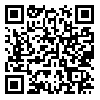Volume 6, Issue 11 (9-2018)
نظریه و عمل 2018, 6(11): 31-66 |
Back to browse issues page
Download citation:
BibTeX | RIS | EndNote | Medlars | ProCite | Reference Manager | RefWorks
Send citation to:



BibTeX | RIS | EndNote | Medlars | ProCite | Reference Manager | RefWorks
Send citation to:
Firoozi M, Seifi M, Hoseinimehr A, Faghihi A R. (2018). The Position of Artistic Education Aspects, Content Structure and Three-Dimensional Model of Curriculum in the Art and Culture Books of the Junior High School . نظریه و عمل. 6(11), 31-66.
URL: http://cstp.khu.ac.ir/article-1-2807-en.html
URL: http://cstp.khu.ac.ir/article-1-2807-en.html
Abstract: (10649 Views)
| : Flourishing students' artistic capacities is among the major missions of education in the Document of Fundamental Reform. The five axes of artistic education including communication with nature, aesthetics, artistic production, familiarity with cultural and artistic history and heritage, and artistic criticism, along with the content structure of culture and art textbooks including visual arts, calligraphy, traditional arts, vocal arts and performing arts are all issues that should be considered by planners in developing potential human abilities. This study involved the content analysis of the culture and art textbooks of the junior secondary system in 2015-2016. Images, texts, and activities were taken as the unit of record. The encoding method was deductive following the topical and structural aspects of culture and art education. To validate the encoding process, a second rater encoded 10 percent of the content, indicating a correlation of 0.89. The results revealed that artistic production, aesthetics, artistic criticism, familiarity with cultural and artistic history and heritage and communicating with nature are the most significant aspects of artistic education respectively. Additionally, visual arts, traditional arts, calligraphy, vocal arts, and performing arts are the main priorities. The study of the 3D model of curriculum structure showed the application of all three activity types (prescriptive, semi-prescriptive and non-prescriptive) in the textbooks, but their content needs to be reviewed regarding the coordination of activities with the educational content presented, the form of content integration, balance and diversity, and the lack of raising students’ motivation and creativity. |
Keywords: artistic education, junior high school, aspects of artistic education, content structure, three-dimensional model of curriculum
Type of Study: Applicable |
Received: 2017/07/4 | Revised: 2018/11/28 | Accepted: 2017/08/30 | Published: 2018/11/17
Received: 2017/07/4 | Revised: 2018/11/28 | Accepted: 2017/08/30 | Published: 2018/11/17
| Rights and permissions | |
 |
This work is licensed under a Creative Commons Attribution-NonCommercial 4.0 International License. |





